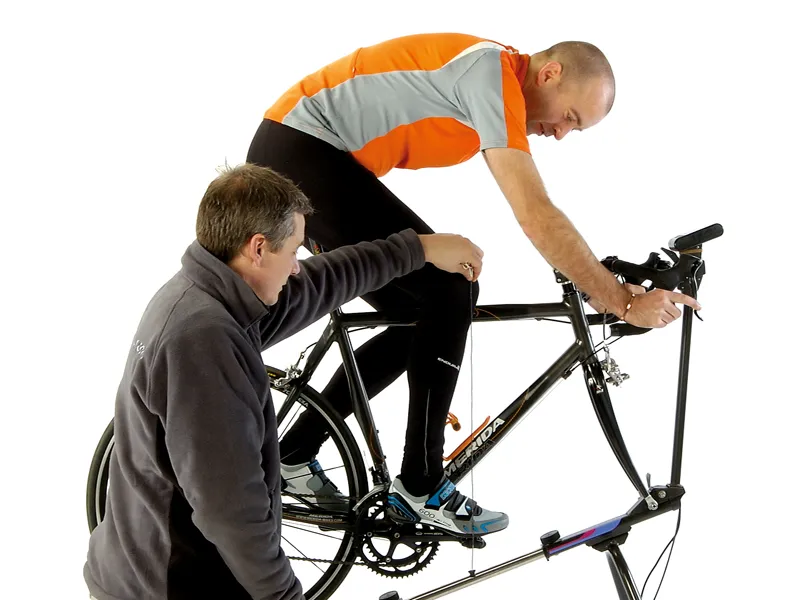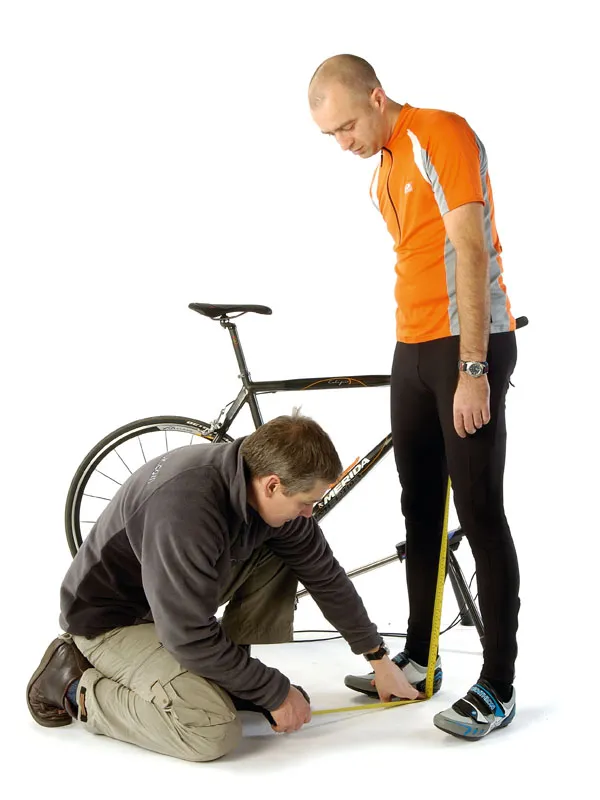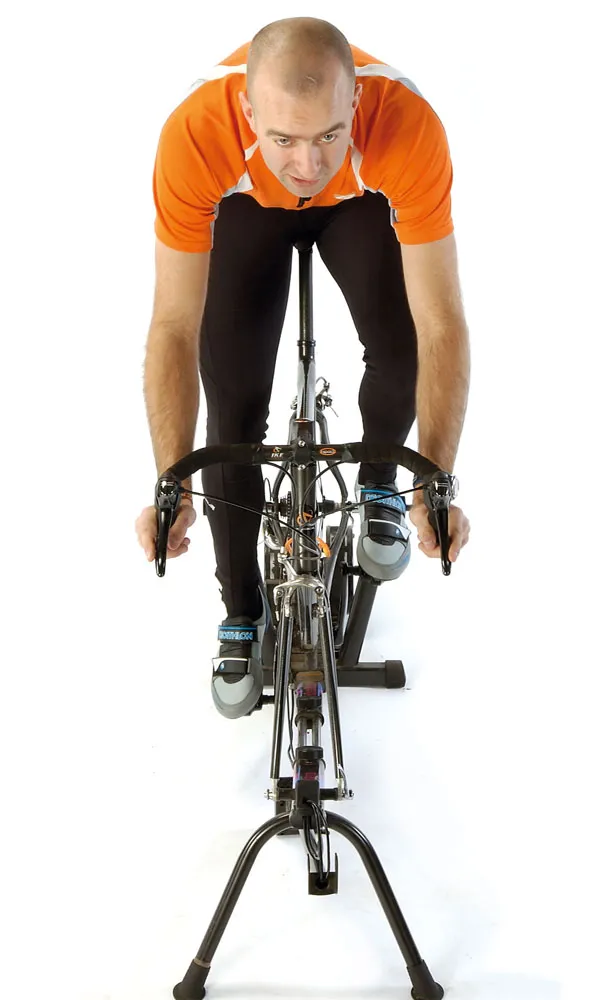You and your bike should dovetail together, so that you get the best ride possible and the bike maximises its potential. 'Man and machine in perfect harmony', to use an over-used phrase.
By tweaking your position, getting some work done or yourself or buying the right piece for your bike you can regain unity. Don't let a complaint become something you feel needs to be endured. It doesn't have to be. Good riders aren't better because they put up with aches and pains more than lesser mortals. More a case that by trial and error they have found what works for them and how to minimise unnecessary discomfort.
If you've got a bad back, bad knee or whatever, be sure to do something about it as soon as possible. Otherwise, it might become more serious and lead to more permanent problems.
Tension...
Neck pain, headaches and/or shoulder tension are common for fitness riders to report. The muscular tension is often due to handlebars being too low or the stem too long. This can be due to trying to get too low and aero, or just having too long a reach for the rider's torso and arm length. If you place your elbow against the nose of the saddle, your middle (longest) finger should be approximately 60 to 80mm (or the approximate width of the knuckles on your other hand) behind the handlebar.
Alternatively carrying heavy loads in a courier bag or rucksack can put strain on the muscles around the neck and shoulders. So try riding with panniers. Additionally the correct stem height and length can alleviate shoulder tension and make you lock your arms out less.
Bike fit 1: Make sure the handlebars are the right length and height, so you feel comfortable and can control the bike with ease. Then add some extra padding to the bars for perfect hand comfort.
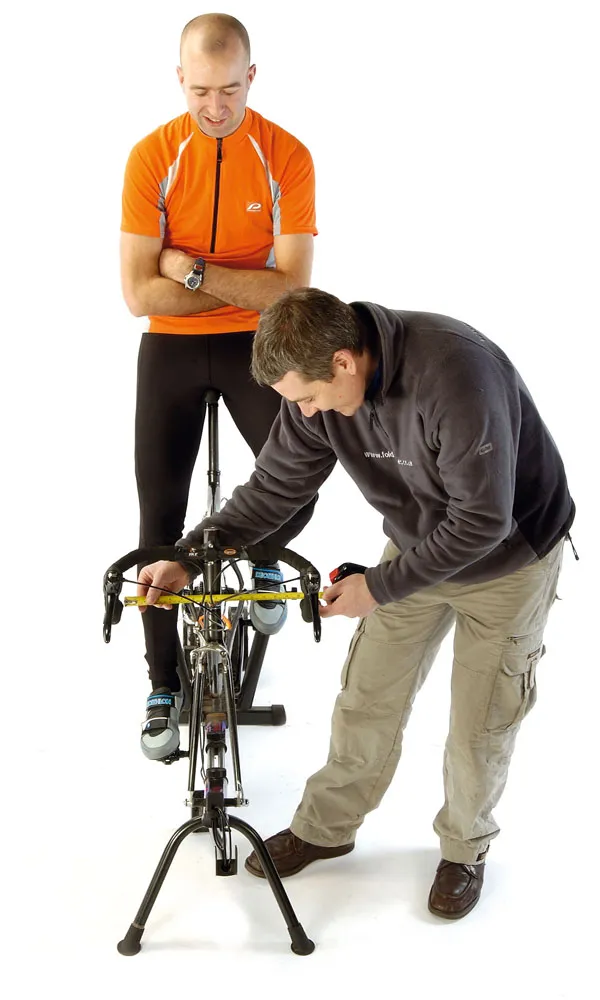
Ever wondered why you feel heavy on steering and always seem to be resting on your arms rather than having slightly bent 'soft' elbows? In most cases this scenario manifests itself in tight arms, blisters, numb hands and even shoulder tension. You may also see excessive bar tape wear and bunching up. There's a simple cure for this: tilt your saddle until it is flat or, for some people, even slightly tilting up at the front.
Use a spirit level to see how 'flat' your saddle really is, or isn't, double checking that the floor you have the bike on is flat. You may also find that good padded gloves, Specialized Bar Phat Padding and the above handlebar reach tip all contribute to a perfect hand-handlebar interface.
Be sure that the saddle height is not too high (often a man-thing). Ideally the seat to crank distance (when at the furthest point from the saddle) falls close to 109% of your inside leg length, measured crotch to floor. Get this wrong and you'll overstrain on your hamstrings, knees and lower back. Check the seat post doesn't move (carbon posts in carbon frames often do); I would suggest a small hairline notch scraped into the post, things like electrical tape move over time, a line stays.
Bike fit 2:Get your saddle flat after ensuring that the height is right
It's about the back... When cycling you are often bent over or in a twisted position looking over your shoulder or drinking. This is one cause of lower back pain.
The other three main culprits are: riding big gears too often, lack of abdominal/ lower back strength and poor flexibility. Use of smaller gears on certain days of the week (eg spinning Sunday) helps to reduce strain. You can also take the time to build some off-the-bike strength with sit up exercises and lower back strengthening, maybe even a few months each winter in the gym.
Best of all take time to stretch. Data from the US Military shows holding hamstring stretches three times a day, for 30 seconds five times reduces injuries dramatically. A light stretching routine (see below) is easy to do at the end of your ride once you get home and need to cool down.
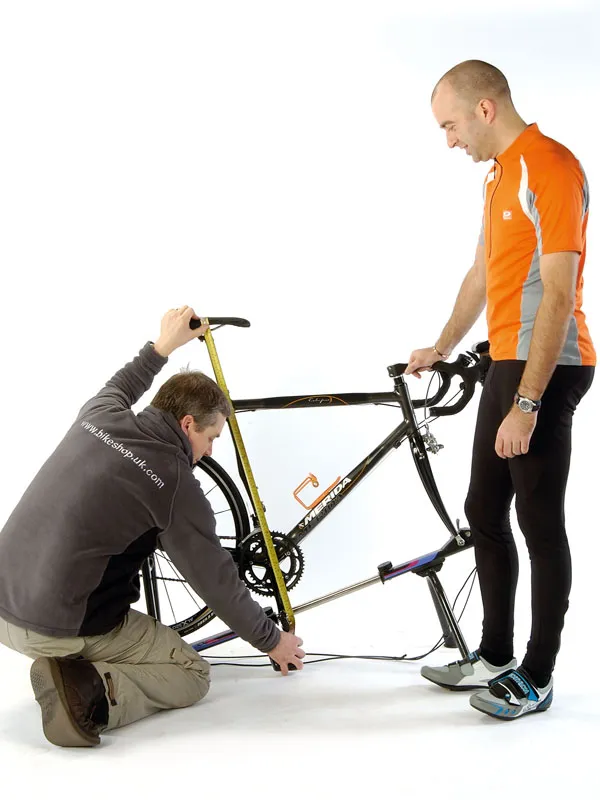
Bike fit 3: take care of your back and abdominals as these are the central column of your cycling physiology - stretch lightly after rides.
Needy knees...
The knee is a complicated structure consisting of ligaments, bones and tendons lying smack bang between your cycling muscles. It bends, twists and strains as your pedals revolve in a very unnatural circle. Suffice to say there's a fair share of fitness riders with niggling knees, often as a result of a sporadic riding regime. This can be compounded by the use of toe clips or clipless pedals that may have too much or too little play, or float, in them.
Horses for courses: some riders need play in the ankle, others need none. An early trip to a sports injury clinic is a safer and wiser option if there is serious pain or a history of knee injury or surgery.
If you press down on the pedals pointing your toes most of the time this will put a lot of strain on the lower leg (calf ) muscle and the knee. Add too high a saddle and you're heading for big trouble. Sometimes sitting too far forward or too high causes this over extension. It may just be that you have tight calfs - if so again stretch them by lifting your toes upwards and holding for a count of 30. Repeat this five times and have a masseuse give them the once over.
Bike fit 4: be aware of knee complaints, calf tightness and anything from the waist down that is a serious pain - at least look at the bike set up; if it continues get professional help.
Don't suffer, solve it!
The complaints above are just the main ones that riders can be plagued by. The prescription is not always obvious. However, choose from these: R.I.C.E (Rest, Ice Compression, Elevation), Massage, Bike Set Up, Bike Equipment and Stretching or Body Work (physio, chiropractor, chiropodist, podiatrist).
What you must do is ensure a regular complaint does not become something you accept as part of your cycling. You should not have to endure pain or 'after shocks' when you ride. As a rider you probably have enough problems getting on the bike regularly without injury or pain stopping you. Don't suffer. Sort it out.
